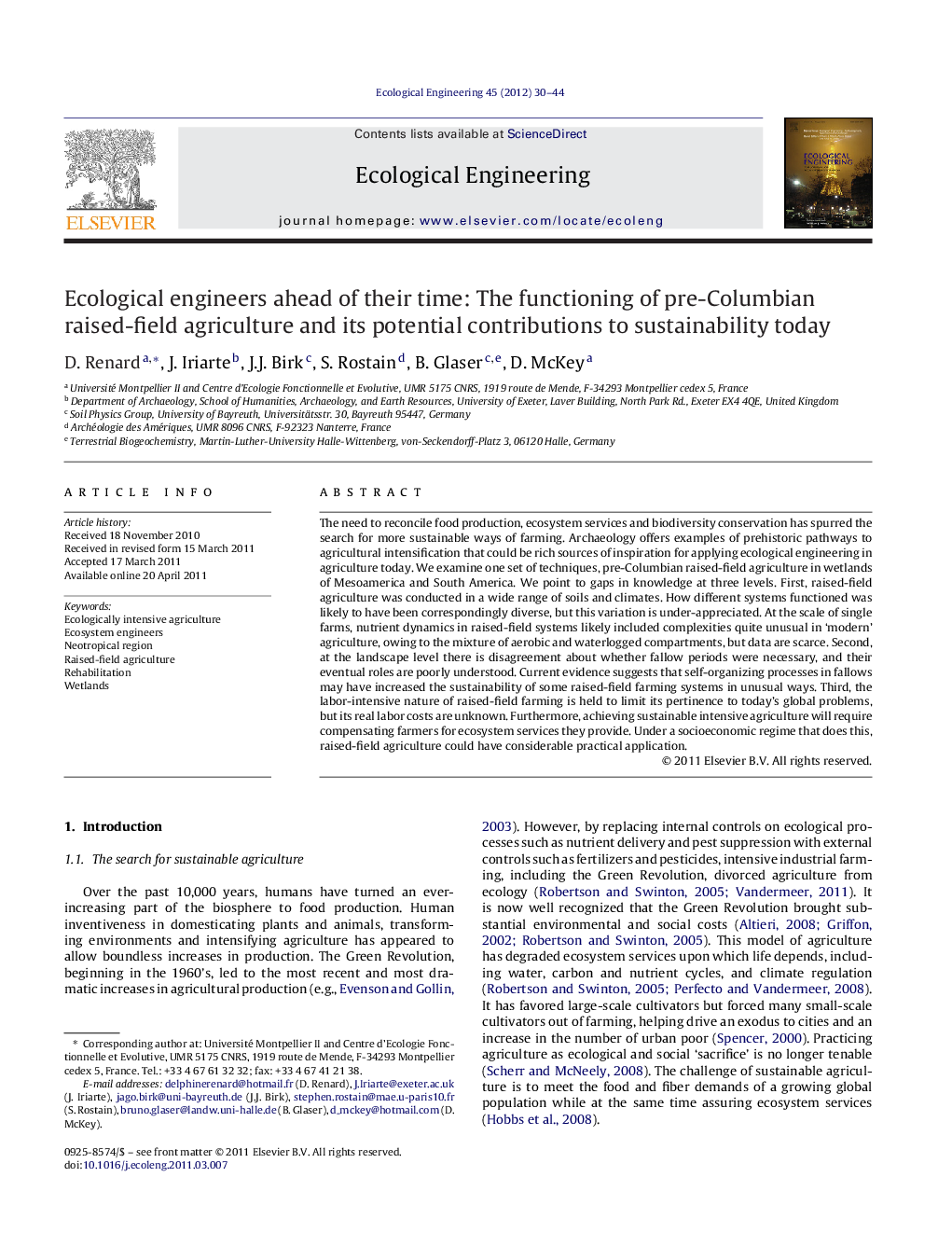| Article ID | Journal | Published Year | Pages | File Type |
|---|---|---|---|---|
| 4390046 | Ecological Engineering | 2012 | 15 Pages |
The need to reconcile food production, ecosystem services and biodiversity conservation has spurred the search for more sustainable ways of farming. Archaeology offers examples of prehistoric pathways to agricultural intensification that could be rich sources of inspiration for applying ecological engineering in agriculture today. We examine one set of techniques, pre-Columbian raised-field agriculture in wetlands of Mesoamerica and South America. We point to gaps in knowledge at three levels. First, raised-field agriculture was conducted in a wide range of soils and climates. How different systems functioned was likely to have been correspondingly diverse, but this variation is under-appreciated. At the scale of single farms, nutrient dynamics in raised-field systems likely included complexities quite unusual in ‘modern’ agriculture, owing to the mixture of aerobic and waterlogged compartments, but data are scarce. Second, at the landscape level there is disagreement about whether fallow periods were necessary, and their eventual roles are poorly understood. Current evidence suggests that self-organizing processes in fallows may have increased the sustainability of some raised-field farming systems in unusual ways. Third, the labor-intensive nature of raised-field farming is held to limit its pertinence to today's global problems, but its real labor costs are unknown. Furthermore, achieving sustainable intensive agriculture will require compensating farmers for ecosystem services they provide. Under a socioeconomic regime that does this, raised-field agriculture could have considerable practical application.
